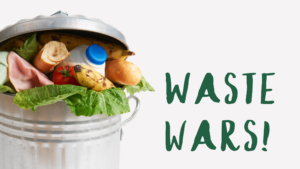The following blog comes from a regular contributor, Sarah Dwyer, who is a mother of four and one of our parent members. In this latest piece she reflects on Easter expectations and how she’ll be striving for balance this year.
Can you believe that summer has come and gone, the mornings are getting crisper and yes, term 1 is nearly done and dusted? This all means that Easter is nearly here too! But of course, you already knew that. How can we forget with the strategically placed chocolate eggs, hot cross buns and bunnies at the supermarket checkouts, the ads on our TVs, on the trams rumbling past us and at the bus shelter the kids are huddling in on the commute to and from school? Yep, Easter temptations are everywhere! And it’s not surprising. 88 per cent of us will buy chocolate this Easter with each of us spending an average of over $60.00. And families will spend even more, an average of around $75 [i]. But here is the conundrum. How much do we let our kids (and ourselves) indulge in this time of year? I think that most of us are happy to let the Easter bunny deliver the treats on Easter morning, let the grandparents indulge their little ones with a bunny and support the school Easter fundraising raffle. But how much is too much?
We’re all aware of the obesity epidemic that’s facing us. The latest research has found that 1 in 4 children and adolescents aged 2-17 years of age and 2 in 3 adults are above a healthy weight [ii]. Further to this, excess weight is a major risk factor for cardiovascular disease, type 2 diabetes, some musculoskeletal conditions and some cancers[iii]. Adding to this is the risk to our dental health with the consumption of chocolate also increasing the risk of dental caries (decay) due to its high concentrations of sugar [iv].
So, here’s the issue – where do we draw the line when Easter comes around and there are chocolaty and yummy treats (who doesn’t want to pass up a toasted hot cross bun?!?) left, right and centre? And how do we set the best example for our kids around barriers of what to let them have?
I know that as a parent, I often deny my four kids that chocolate bar that they so desperately want when we’re grabbing a couple of last-minute ingredients for dinner at the supermarket. Yet my actions are founded on the basis that allowing them that treat will potentially mean that they will learn that every time we head to the supermarket, they will be able to ask for, and get, a sugar ladened delight! However, with Easter, is it not just a one-off annual event which is also steeped in cultural and religious traditions, the kindness of giving and receiving and the excitement of the white bunny delivering much anticipated eggs and bunnies on Easter Sunday?
One positive aspect to their being so much marketing content around Easter is that retail shops and supermarkets also seem to be offering more non-food based Easter activities and gifts. There are also heaps of great ideas online too. Making playdough bunny jars and Easter hunt baskets, doing themed activity books with cross-words, mazes and Easter maths based activities all seem to be ‘in vogue’. So, I suppose it really comes down to balance. Accepting that yes, the kids will be given and eat probably too many eggs in the lead up to Easter as well as over Easter weekend and suggesting that they have one (or some) today and have the rest tomorrow may fall on deaf ears. But also keeping in mind there are other ways of celebrating this special time aside from just eating and indulging. And maybe the key is through doing some non-food related activities, modelling such behaviour and approaching Easter in a balanced way that we can strike some harmony.
We all missed out on the social aspects and fun of celebrating this special time with our families and friends last year due to the pandemic, so in our household there will be chocolate eggs and bunnies to share but also some egg and spoon races, making Easter egg hunt kits and playing a game or two of pin the tail on the bunny in the lead up and on the morning of the visit from the bunny himself!
[i]Carey, A. Mar 2018. ‘The average Australian will shell out $62 on Easter chocolate this year’. Accessed online 7/3/21. https://www.news.com.au/finance/business/retail/the-average-australian-will-shell-out-62-on-easter-chocolate-this-year/news-story/a088788c224ef34a85d83b9f911a09bd
[ii] Australian Institute of Health and Welfare. Overweight and Obesity. July 2020. Accessed online 7/3/21. https://www.aihw.gov.au/reports-data/behaviours-risk-factors/overweight-obesity/overview
[iii] Australian Institute of Health and Welfare. Overweight and Obesity. Nov 2020. Accessed online 7/3/21. https://www.aihw.gov.au/reports/overweight-obesity/overweight-and-obesity-an-interactive-insight/contents/what-is-overweight-and-obesity
[iv] Health Engine. Chocolate and Health. Mar 2010. Accessed online 7/3/21. https://healthengine.com.au/info/chocolate-and-health#c8




